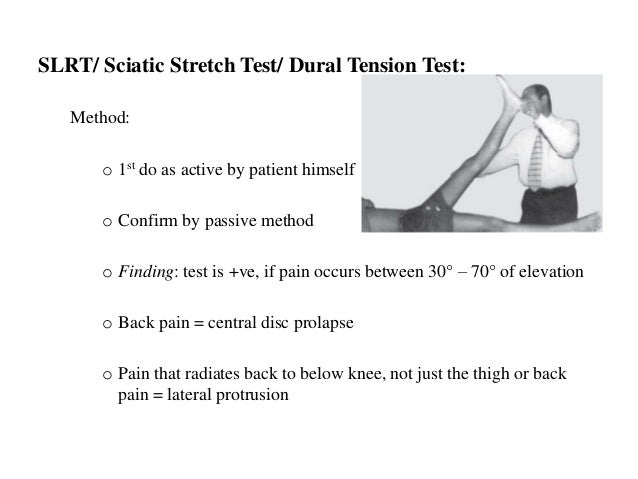
During the SLR, these nerve roots are pushed anteriorly and inferiorly, pulling the dura mater caudally, laterally and anteriorly. This test places tensile stresses on the sciatic nerve and of traction at the lumbosacral nerve roots primarily from L4 to S2. Lazar Lazarevic was the first to establish this test. Charles Laseague, and referred to as Laseagues test. It is also classified as a neurodynamic evaluation test as it can detect excessive nerve root tension or compression. It also has specific importance in detecting disc herniation and neural compression.

The Straight Leg Raise (SLR) test is commonly used to identify disc pathology or nerve root irritation, as it mechanically stresses lumbosacral nerve roots.


 0 kommentar(er)
0 kommentar(er)
